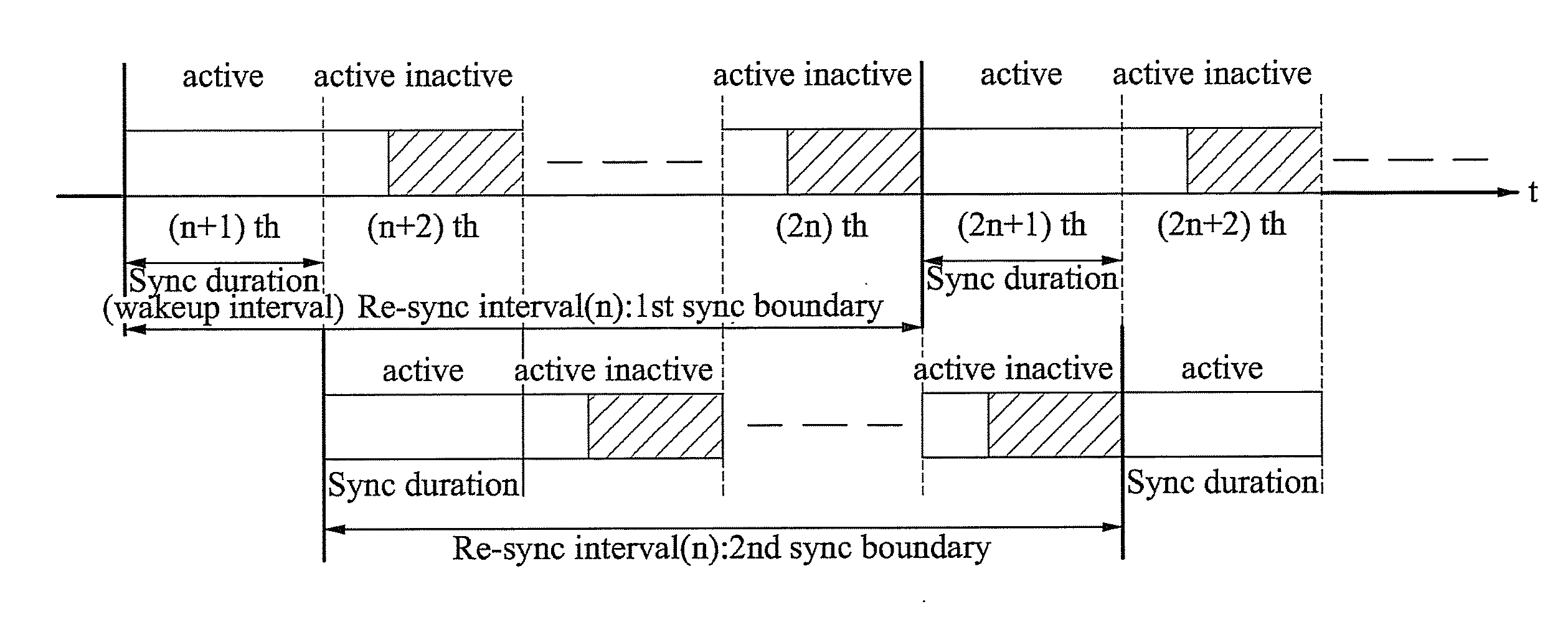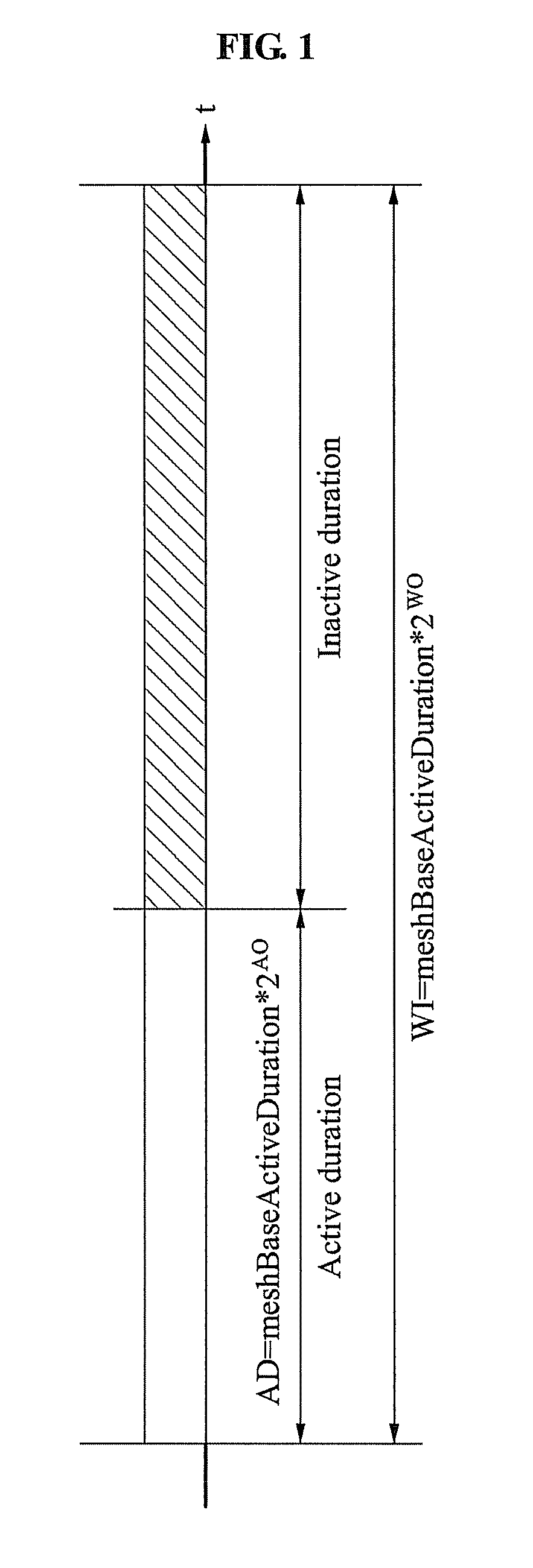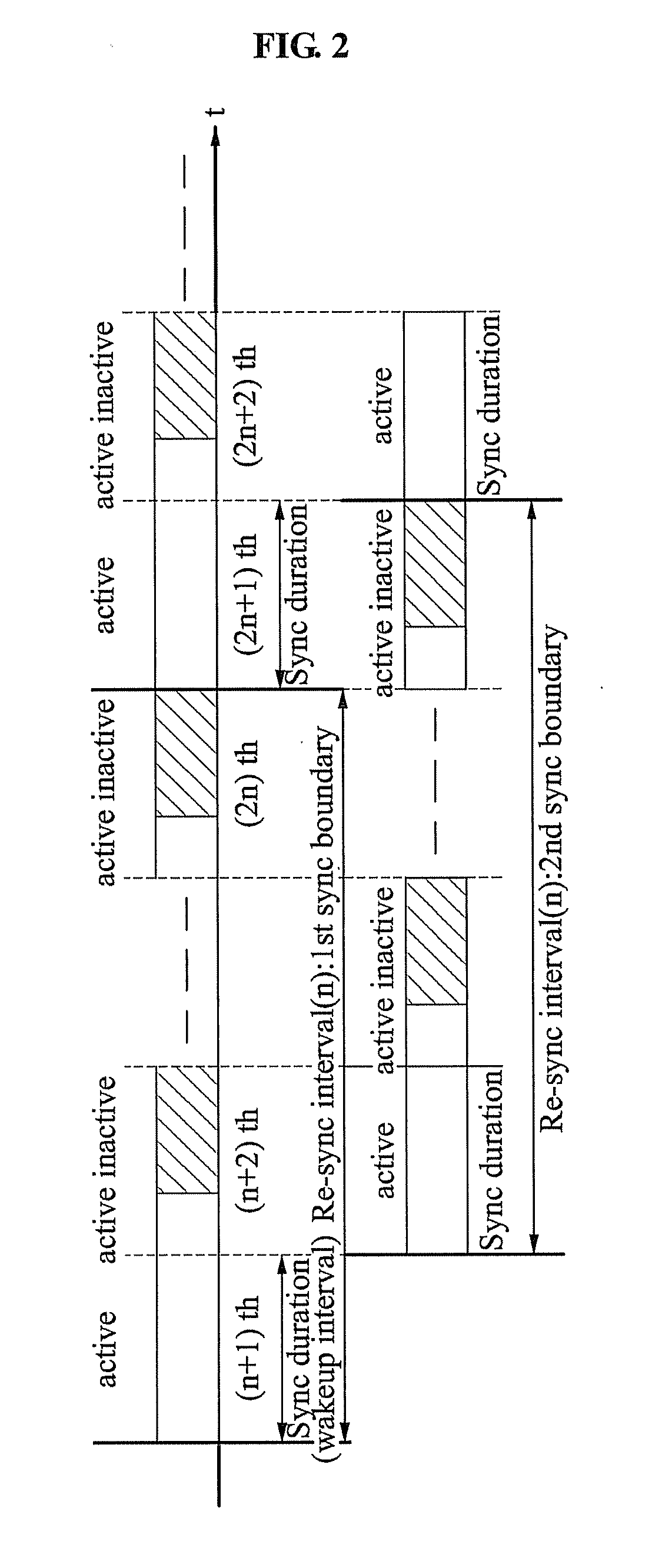Time synchronization and routing method in wireless sensor network, and apparatus for enabling the method
a wireless sensor and time synchronization technology, applied in the direction of synchronisation arrangement, high-level techniques, instruments, etc., can solve the problems of high power characteristics of routing operations and the like, low power routing schemes, and increased end-to-end latency time, so as to reduce the end-to-end latency and power consumption of each node, reduce data retransmission and transmission latency, and reduce the probability of data collision
- Summary
- Abstract
- Description
- Claims
- Application Information
AI Technical Summary
Benefits of technology
Problems solved by technology
Method used
Image
Examples
first embodiment
[0127]In a first embodiment, a child node is synchronized with a time of a parent node through a message exchange between the parent node and the child node.
[0128]Specifically, according to the first embodiment, time synchronization of the network may be performed based on two synchronization request messages that are transmitted at different point in times from the parent node and transmission time information of the two synchronization request messages.
[0129]The first embodiment may be arranged as follows:
[0130]1) Parent node A unicasts a first synchronization request message to particular child node B in time T1.
[0131]2) The child node B receives the first synchronization request message in time T2.
[0132]3) The child node B transmits a synchronization reply message corresponding to the first synchronization request message to the parent node A in time T3.
[0133]4) The parent node A receives the synchronization reply message from the child node B in time T4.
[0134]5) When the synchr...
second embodiment
[0136]In a second embodiment, the parent node A broadcasts the first synchronization request message in time TA1.
[0137]The second embodiment may be arranged as follows:
[0138]1) The parent node A broadcasts a first synchronization request message in time TA1.
[0139]2) Child nodes B, C, and D receive the first synchronization request message in time TB2, TC2, and TD2, respectively.
[0140]3) The child nodes B, C, and D transmit a synchronization reply message corresponding to the first synchronization request message to the parent node A in time TB3, TC3, and TD3, respectively.
[0141]4) The parent node A receives the synchronization reply message from the child node B in time TA4-TB3, receives the synchronization reply message from the child node C in time TA4-TC3, and receives the synchronization reply message from the child node D in time TA4-TD3.
[0142]5) When the synchronization reply message is received from each of the child nodes B, C, and D, the parent node A broadcasts a second sy...
third embodiment
[0144]A third embodiment is a synchronization scheme using two synchronization packets as shown in FIG. 4.
PUM
 Login to View More
Login to View More Abstract
Description
Claims
Application Information
 Login to View More
Login to View More - R&D
- Intellectual Property
- Life Sciences
- Materials
- Tech Scout
- Unparalleled Data Quality
- Higher Quality Content
- 60% Fewer Hallucinations
Browse by: Latest US Patents, China's latest patents, Technical Efficacy Thesaurus, Application Domain, Technology Topic, Popular Technical Reports.
© 2025 PatSnap. All rights reserved.Legal|Privacy policy|Modern Slavery Act Transparency Statement|Sitemap|About US| Contact US: help@patsnap.com



